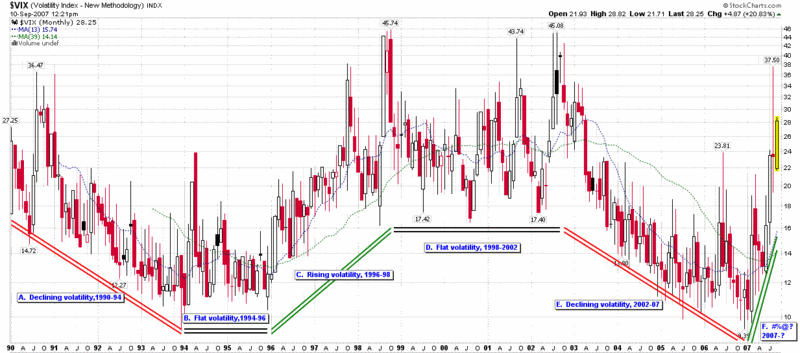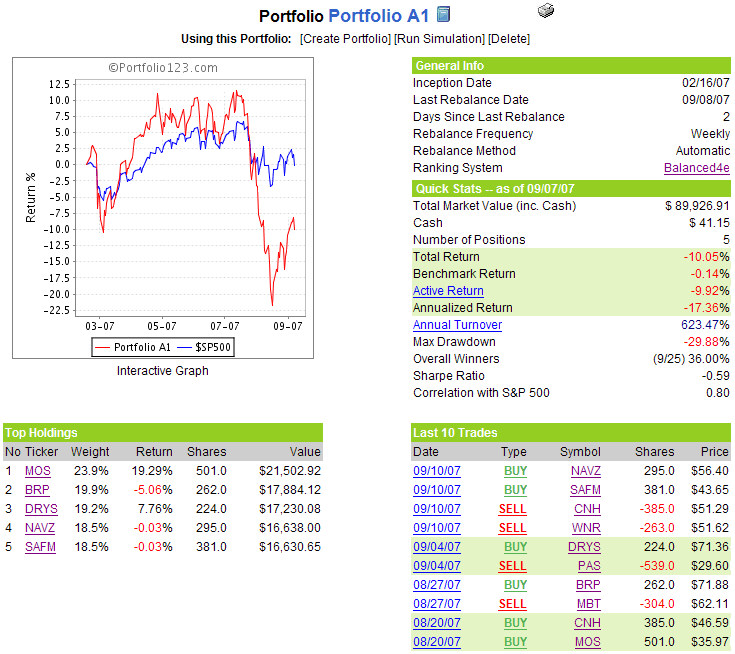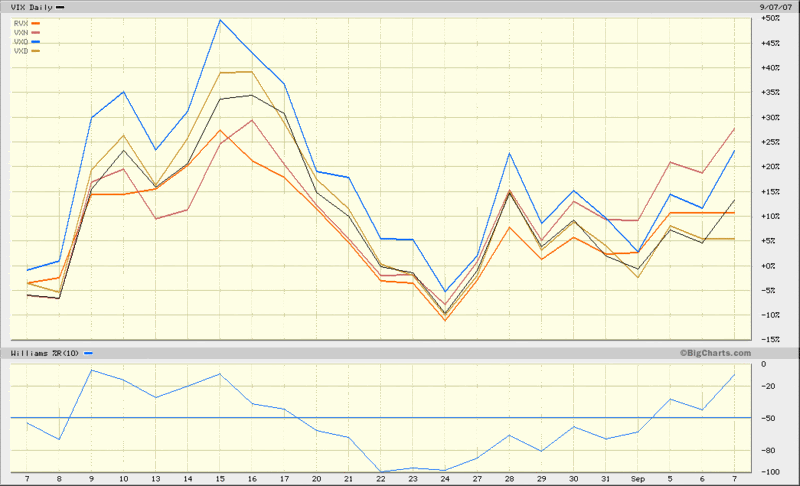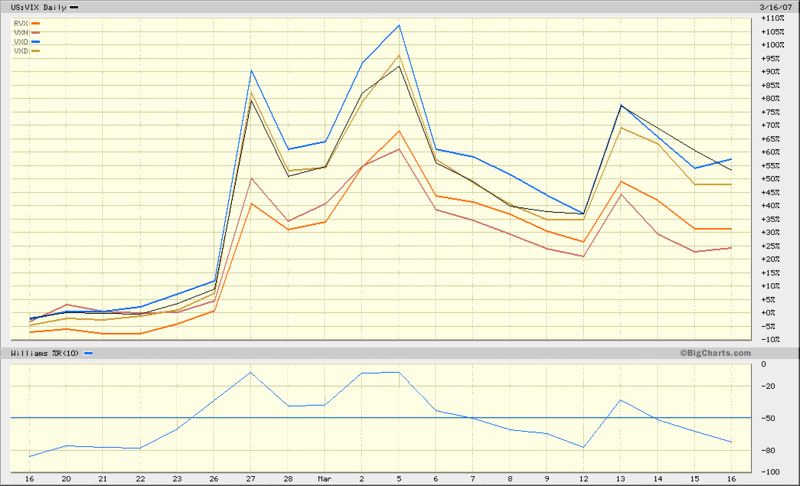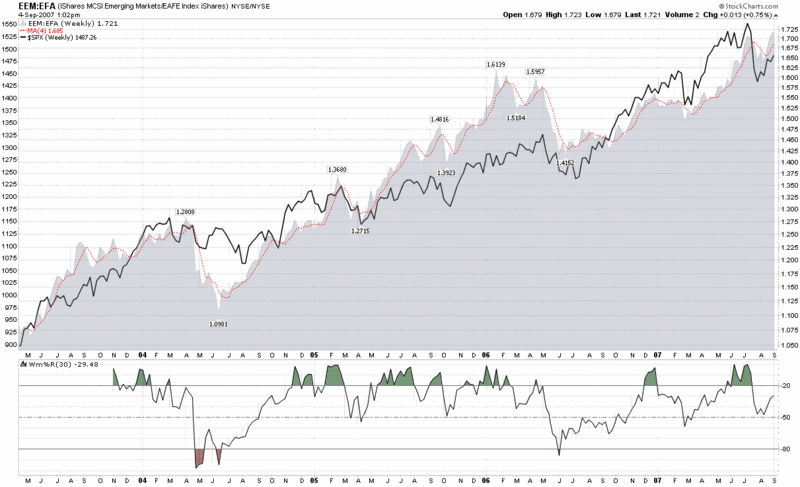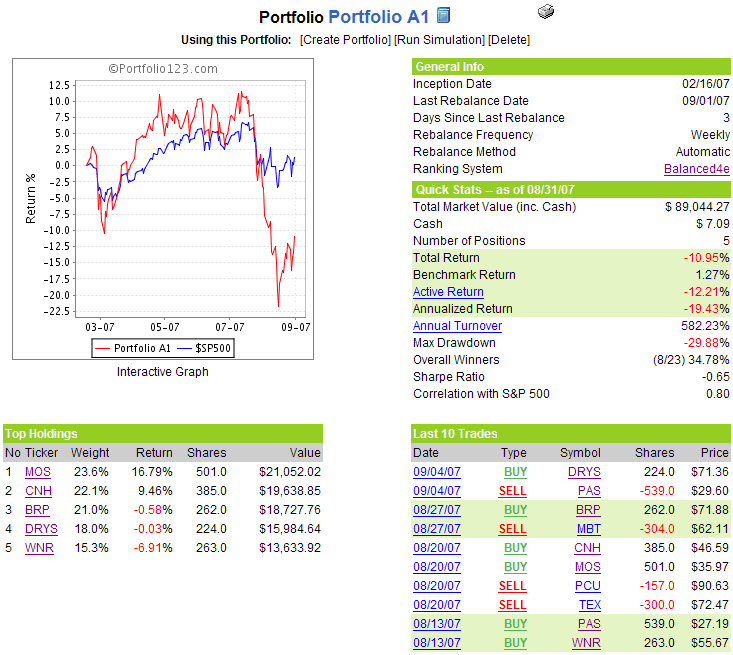 Yesterday I happened to be rummaging through some old files and came across my 1997 tax return. Fortunately, this had nothing to do with any communications with the IRS, but it got me to thinking about how my investing ‘evolution’ has three distinct long-term phases. Specifically, for the first ten years of my investment life, I dabbled in equities with mixed results at best, in much the same manner as Nicholas Darvas describes his early floundering in How I made $2,000,000 in the Stock Market.
Yesterday I happened to be rummaging through some old files and came across my 1997 tax return. Fortunately, this had nothing to do with any communications with the IRS, but it got me to thinking about how my investing ‘evolution’ has three distinct long-term phases. Specifically, for the first ten years of my investment life, I dabbled in equities with mixed results at best, in much the same manner as Nicholas Darvas describes his early floundering in How I made $2,000,000 in the Stock Market.
Deciding that the time and effort was not worth the lackluster results, I pushed my savings into mutual funds for the next five years or so, again with fair to middling results. I got a little ornery and started chasing momentum funds like those from PBHG and Van Wagoner, but ultimately concluded that it might be possible for me to try to mimic what they were doing by buying individual stocks on my own.
[As a side note,
Gary Pilgrim (PBHG) and
Garrett Van Wagoner ended up having more than their share of difficulties, but their approach inspired me to aim higher than beating the S&P 500 by 1.0% point each year.]
To make a long story short(er), the third phase began in 1997 when I decided to go ‘all in’ on a portfolio consisting entirely of internet stocks. While that may not sound all that surprising with the benefit of hindsight, very few investors were buying any internet stocks at the time and frankly there were not that many choices out there. I reasoned (and yes there was some hope involved too) that if most of the technology changes that were being touted at the time came to fruition, it could be a once in a lifetime investment opportunity.
So…I made the type of decision in 1997 that many others would make in 1999 and early 2000. What happened?
In retrospect, I might have done better plowing my money into the Munder NetNet fund (now the
Munder Internet fund), but instead, I picked five small and very speculative companies that I thought had a chance to be big home runs if things went my way. The first two companies I started buying up were content plays. If content was going to be king, I wanted to own the king makers. Both of my selections are still alive and kicking:
BroadVision (BVSN) had a meteoric rise and then crashed back to earth,
Icarus-style;
Open Text (OTEX) has led a comparatively uneventful existence, growing slowly and steadily to its current $1.3 billion market cap. My third choice was
CyberCash. I expected that someone like PayPal would eventually dominate the electronic payment business with the type of ‘
increasing returns to scale’ (described by
Brian Arthur, among others) as the industry standard, but alas it was not to be CyberCash, which eventually declared bankruptcy, had its assets sold to VeriSign, with the CyberCash intellectual property eventually ending up at PayPal via an acquisition. In the VoIP communications space, I bought
VocalTec, a company that released what I believe was the first internet VoIP program. Now a $16 million also ran (still listed as
VOCL, for the record), they even had something called – of all things – the
IPhone out back in 1995. Sometimes you can recognize the pioneers by the arrows sticking out of their back... For whatever reason, I felt most confident in the fifth ‘internet stock’ I started buying.
Check Point (CHKP) has been a leader in firewall and related security products in the ten years since I first started buying the stock. An Israeli company like VocalTec (for the record, Open Text is Canadian; BVSN was the only Silicon Valley company, as CYCH was headquartered in the Virginia suburbs, just outside of Washington D.C.), Check Point has grown to become a $5.4 billion company, but has always operated in the long shadow of a strong Cisco competitive threat, with this
1998 Check Point press release typical of that battle that has been fought.
So enough of the nostalgia. For those who may be interested, I did hold BVSN all the way to the 2000 top – and then some of the way down. I was out of the other four within a year. In retrospect, CHKP and OTEX turned out to be solid if unspectacular investments; CYCH and VOCL were the two dogs.
I’m not sure exactly what the lesson is here, if any. In 1998 I went on to pick a lot of winners in the internet space – and a lot of dogs. I have always been patient enough to let my winners run, but over the years I have continued to improve my ability to cut my losses quickly and protect my profits for those trades that make a big U-turn. If I had been fortunate enough to have read the likes of
When to Sell, written by Justin Mamis in 1977, and
It’s When You Sell that Counts, a 1991 classic from Donald Cassidy, I’m sure those early internet years would have been considerably more profitable. In the long run, each individual learning curve has different hurdles and a different timetable. The trick is to get a little smarter every day, even if your portfolio does not always reflect all newly acquired wisdom.




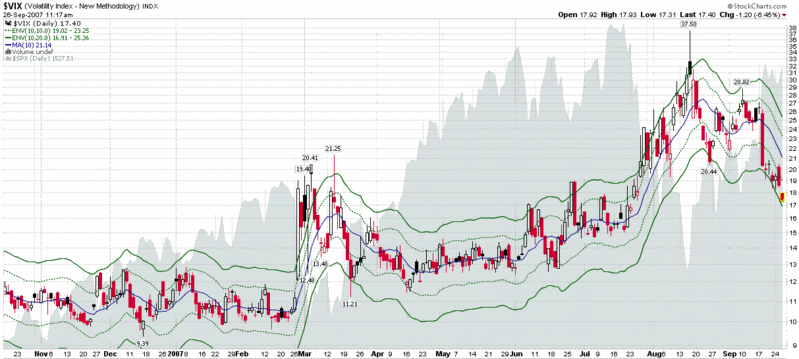
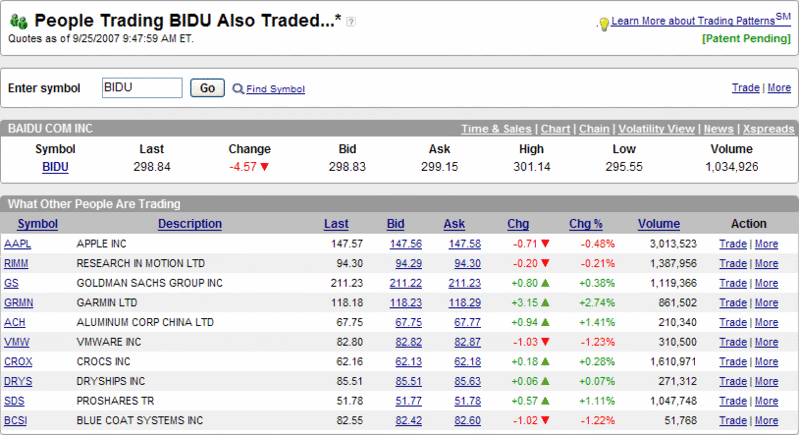

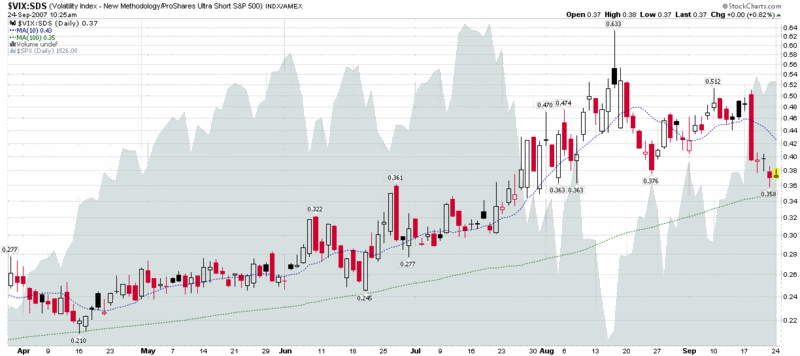


 Yesterday I happened to be rummaging through some old files and came across my 1997 tax return. Fortunately, this had nothing to do with any communications with the IRS, but it got me to thinking about how my investing ‘evolution’ has three distinct long-term phases. Specifically, for the first ten years of my investment life, I dabbled in equities with mixed results at best, in much the same manner as Nicholas Darvas describes his early floundering in
Yesterday I happened to be rummaging through some old files and came across my 1997 tax return. Fortunately, this had nothing to do with any communications with the IRS, but it got me to thinking about how my investing ‘evolution’ has three distinct long-term phases. Specifically, for the first ten years of my investment life, I dabbled in equities with mixed results at best, in much the same manner as Nicholas Darvas describes his early floundering in 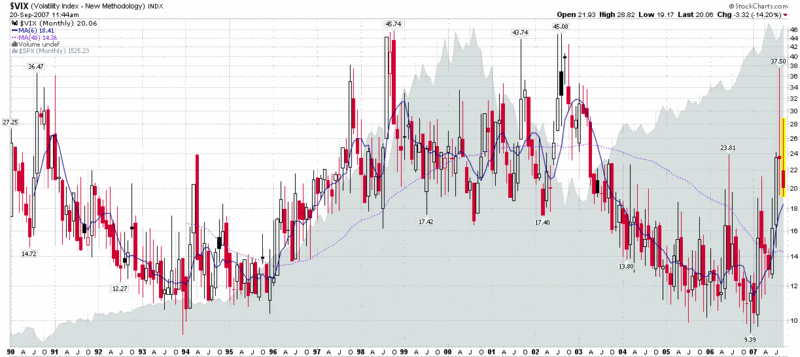
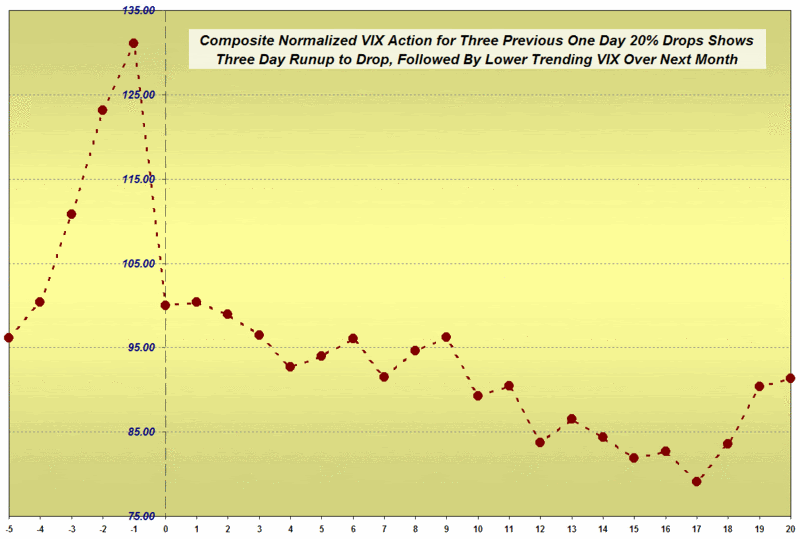
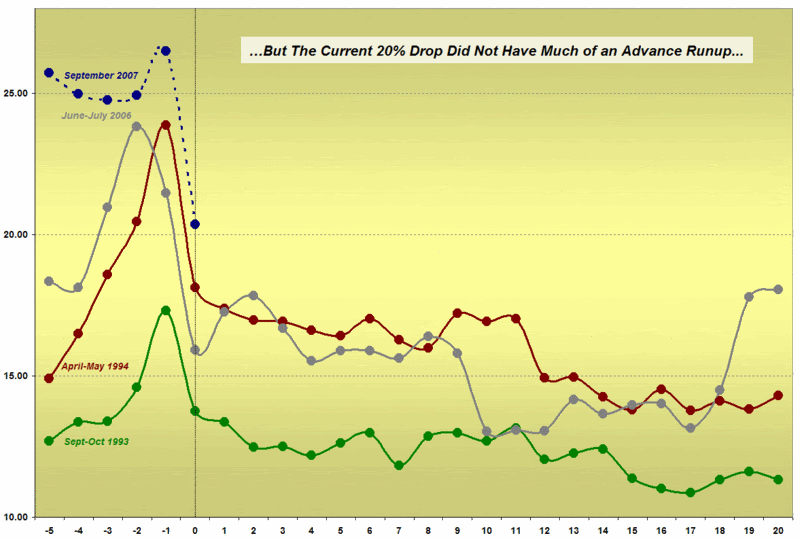
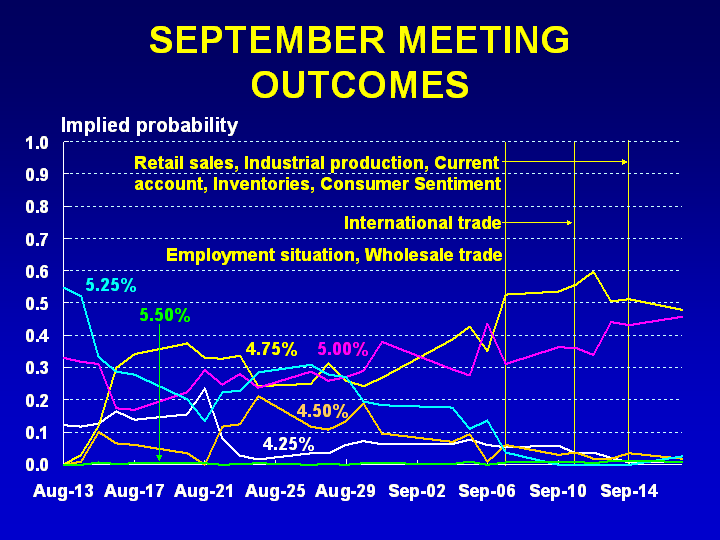
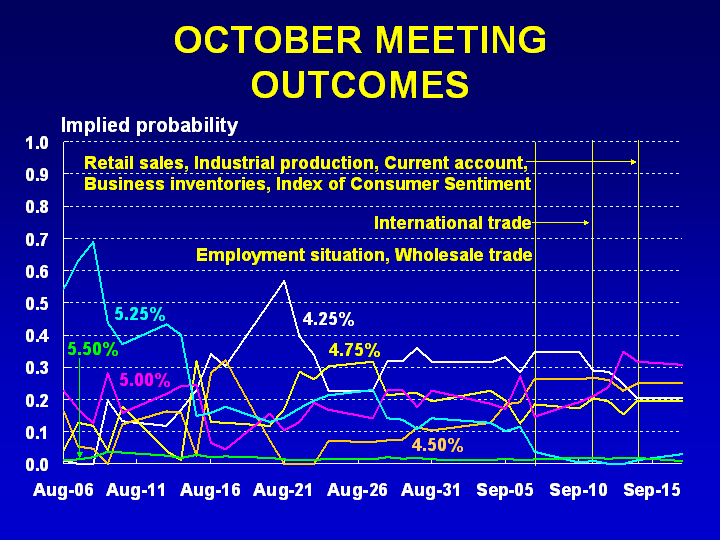


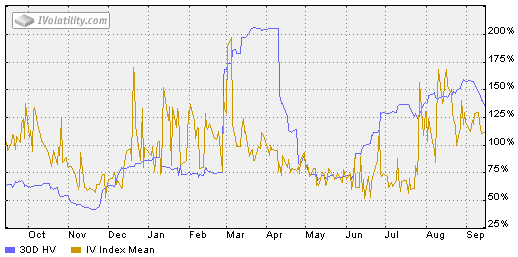
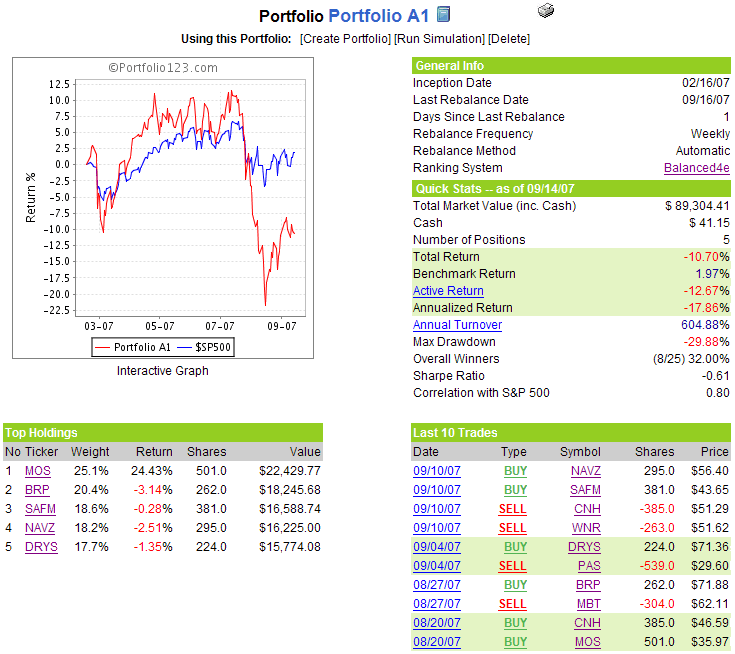

 Since nobody was reading this blog when I first posted about the VIX and FOMC meetings, I thought I might use next week’s highly anticipated FOMC meeting as an excuse to flag some research I published earlier in the year.
Since nobody was reading this blog when I first posted about the VIX and FOMC meetings, I thought I might use next week’s highly anticipated FOMC meeting as an excuse to flag some research I published earlier in the year.  Updating a previous post, it now looks as if the September ISEE buy signal I was
Updating a previous post, it now looks as if the September ISEE buy signal I was 